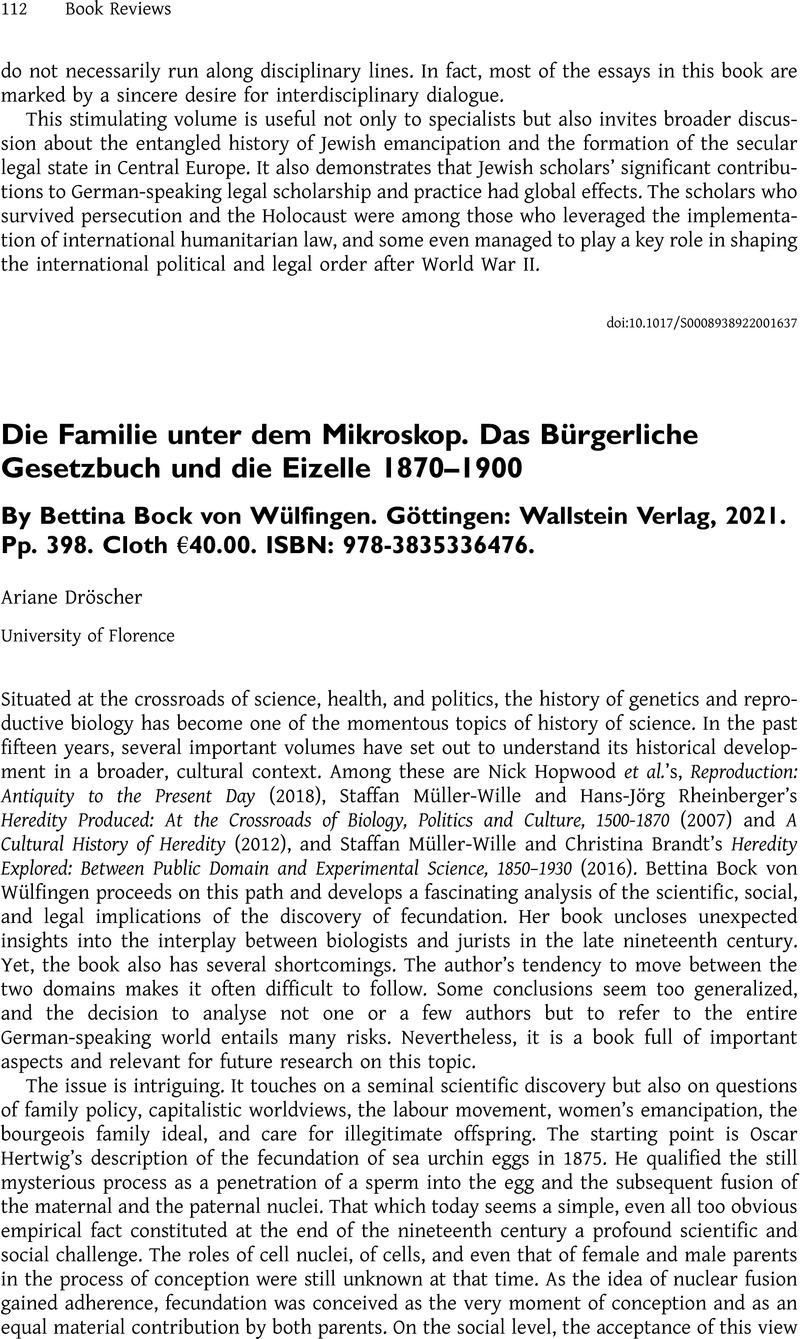No CrossRef data available.
Article contents
Die Familie unter dem Mikroskop. Das Bürgerliche Gesetzbuch und die Eizelle 1870–1900 By Bettina Bock von Wülfingen. Göttingen: Wallstein Verlag, 2021. Pp. 398. Cloth €40.00. ISBN: 978-3835336476.
Review products
Die Familie unter dem Mikroskop. Das Bürgerliche Gesetzbuch und die Eizelle 1870–1900 By Bettina Bock von Wülfingen. Göttingen: Wallstein Verlag, 2021. Pp. 398. Cloth €40.00. ISBN: 978-3835336476.
Published online by Cambridge University Press: 24 March 2023
Abstract
An abstract is not available for this content so a preview has been provided. Please use the Get access link above for information on how to access this content.

- Type
- Book Review
- Information
- Copyright
- Copyright © The Author(s), 2023. Published by Cambridge University Press on behalf of Central European History Society of the American Historical Association


